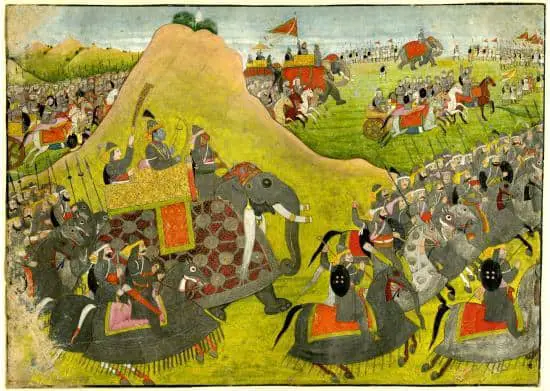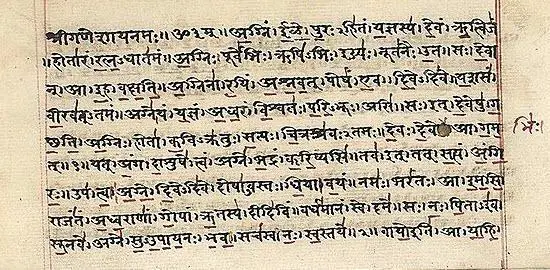A collection of Indian animal fables written in prose and verse, Panchatanatra translates to ‘Five Treatises’ in Sanskrit. Although written as animal fables, it was intended as a ‘Niti shastra’ or textbook on the policy and conduct of kings during 200 BCE. It has many similarities and parallel stories with the Jataka Tales of Buddhist texts.
Although the present-day name of this anthology translates to ‘Five Treatises,’ its earlier manuscript versions vary regionally with names such as Tantrakhyayika, Panchakhyanaka, and Tantripakhyana with the suffixes translating to “little story” in Sanskrit.

Table of Contents
What is the Panchatantra?
The Panchatantra is a vast collection of ancient Indian animal fables based on oral storytelling traditions that were developed as policy textbooks for Indian rulers.
Scholars refer to it as a folklore of interwoven tales in prose and poetry compiled in Sanskrit and Pali to highlight the Hindu principle of ‘niti,’ often regarded as the ‘wise conduct of life.’ It is divided into five distinct books with nearly 87 stories of animal fables and magical lore.
Panchatantra tries to teach its readers about the principles of wisdom, truth, reliability, and empathy through these collections of animal fables. It attempts to educate the young and the old on how to understand others, make trustworthy companions, meet life’s difficulties, live in harmony, and combat problems with wisdom.
The Panchatantra is the most frequently translated text of Indian literature, and its stories convey morals to young and old readers.
It is said that there is a version of Panchatantra in nearly every regional and major language in India, and 200 versions are available in 50 foreign languages. The first translation was estimated to be in 550 CE in Middle Persian by Burzoe, which further inspired translations in Syriac and Persian.
‘Fables of Bidpai’ remains one of the most popular translations of the Panchatantra in English by European scholars.
Who wrote Panchatantra?
The prelude of the original Panchatantra identifies an aged scholarly Brahmin named Vishnu Sharma as its primary author. Multiple Hindu texts refer to Vishnusharma as a teacher of the principles of good governance to the dull-witted princes of the kingdom of Amarasakti.
However, South Indian versions of the Panchatantra circulated around the same time attribute the collection of animal fables to a scholar named Vasubhaga. However, many historians believe that the names ‘Vishnusharma’ and ‘Vashubhaga’ are pseudonyms of the true author.
Although the identity of the original author is disputed, Arabic translators in 750 AD attribute the Panchatantra, which they refer to as the ‘Fables to Bidpai,’ to a wise court scholar named Bidpai.
What are the 5 Tantras of Panchatantra
The 87 stories of the Panchatantra are divided into five tenets or books that adhere to the theme of the parables. It tells tales of anthropomorphized animals with human nature, virtues, and values divided into five parts of the ‘Five Thesis.’
Each part begins with a frame story and breaks down into several embedded stories that quote a common moral lesson.
Book 1: Mitra-bheda
Translating to the Loss of Friends, this book is the first part of the Panchatantras. Coincidentally, it is the longest of the five parts, making up for nearly 45% of the total book length.
This book revolves around a jackal named Damanaka, the unemployed minister of the lion king who plots with his moralized sidekick Karnataka to break up alliances of the king. It evolves into a series of parables that describe how conspiracies and misunderstandings break up close and inseparable friendships.
This book has over 30 fables, with the most prominent ones being The Blue Jackal, How the Crow-Hen Killed the Black Snake, The Heron That Liked Crab Meat, The Girl Who Married a Snake, and The Duel between Elephant and Sparrow.
Book 2: Mitra-samprapti
The second book of the anthology consists of morales that surround its theme, ‘The Winning of Friends’. Structurally, it differs from book 1 as a collection of the adventures of four characters instead of embedded fables.
The book emphasizes the importance of friendship and teamwork in life through a crow, a mouse, a turtle, and a deer. The stories teach the readers about cooperation and mutual support between weak and strong animals to overcome problems and difficulties.
With ten fables, this book makes up 22% of the anthology’s length. Notable stories include The Mice that Set the Elephant Free, Spot’s Captivity, Hang-Ball, Greedy, and Self-defeating Forethought.
Book 3: Kakolukiyam
Translating to ‘The Story of Crows and Owls,’ this treatise discusses the consequences of war and peace. It showcases a conflict and, ultimately, the win of the battle of wits over the battle of power and swords.
This part of the anthology adopts the crow as the moral force of good, while owls are represented as evil. The story evolves into a battle between the crow king and the owl king, and the former ultimately wins.
Popular parables in the third book of the Panchatantra include The Brahmin’s Goat, The Old Man with the Young Wife, The Frog that Rode Snake Back, The Cat’s Judgment, and The Snake Who Paid Cash. It covers nearly 26% of the Panchatantra’s length with 18 fables.
Book 4: Labdhapranasam
This fourth book in the series represents ‘The Loss of Gains.’ It is a simple compilation of the moral fables that teach messages like a bird in the hand is worth two in the bush. The tales of animals inform the readers against succumbing to peer pressure and being careful of the cunning intentions of others.
Unlike the first three editions, which emphasize the ethical actions of ‘to do’, this part focuses on actions’ to avoid’ and cautionary messages.
This part contains 13 short fables that revolve around the message of caution and warning. Popular titles include, ‘The Monkey and the Crocodile’, The Ungrateful Wife, The Farmer’s Wife, The Jackal Who Killed No Elephants, and The Dog Who Went Abroad.
Book 5: Apariksitaksarakaṃ
‘Ill-considered action’ is the loose translation of the fifth and final book in the Five Treatises of the Panchatantra. Similar to book four, it consists of simple parables of animals with negative examples of consequences that caution the reader. Some morals of this collection include “don’t build castles in the air” and “don’t act in haste and regret later.”
Unlike the previous editions, this book consists of mostly human characters instead of anthropomorphized animals. Scholars suggest that it may have been intended to mark a transition from the fantasy world of animals to the realities of the human world.
There are 12 fables in this edition that talk about the consequences of hasty actions or jumping to conclusions without diligence: The Musical Donkey, The Unforgiving Monkey, The Loyal Mongoose, The Three-Breasted Princess, and The Brahman’s Dream. The fourth and fifth books complete the remaining 7% of the anthology.
Conclusion
A representation of Hindu texts’ ethical and moral values and virtues, the Panchatantra emerges as an anthology of animal fables meant for the young and the old. Its popularity is such that it remains one of the world’s most translated pieces of literature.
The influence of Panchatantra has extended beyond the Asian realm of the Jataka Tales to penetrate into foreign countries. The Fables of Aesop, particularly ‘The Milkmaid and her Pail,’ is said to have significantly drawn inspiration from Panchatantra’s ‘The Broken Pot.’ The parables of the Panchatantras have significantly influenced the works of the Grimm Brothers. Rudyard Kipling’s story ‘Rikki-Tikki-Tavi’ was likely inspired by the fifth treatise on the mongoose and the snake.




